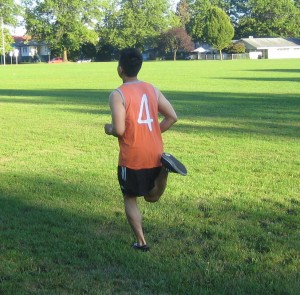Quadriceps strain is also known as muscle pull which can be caused by overuse and overstretching of the quadriceps muscles. They are microscopic and incomplete tearing of the muscle with some bleeding into the tissue of the muscle which depends on the severity of the injury. This injury can range from a very small tear to a complete rupture.
Quadriceps muscles are located in front of the thigh and it is composed of the quadriceps muscles such as the vastus lateralis, vastus medialis, vastus intermedius and rectus femoris which are highly susceptible to this condition. This muscle is susceptible to this condition because it crosses from both the knee and joint of the hip.
Common quadriceps strain symptoms and how it is graded
Grade 1
- Mild discomfort while walking
- There is no swelling
- Local spasms can be felt on the affected area
- Feeling of tightness in the thigh
- Making the knee straight against resistance causes pain
- Sudden feeling of ache on the affected area
Grade 2

- There is swelling and mild bruising in the affected area
- Difficulty in fully bending the knee
- There is pain when straightening the knee against resistance
- Pain in the area where the tear occurred
- Severe pain when walking, kicking, jumping and running
Grade 3
- Development of bruising within 24 hours
- Severe pain in the thigh
- Severe swelling in the affected area
- Difficulty in walking without the help of crutches
- Static contraction causes pain and produces a bulge in the muscle.
- Individual cannot perform any sport or activities for 1-3 months.
Treatment and home remedies for quadriceps strain
Mild quadriceps strain usually heals in 10 days while moderate case can heal between 6-10 weeks. In case the injury is severe, it can be heal in about 3-4 months.
- Take plenty of rest especially the affected area in order to help restore it.
- Apply an ice pack for 15-20 minutes over the affected area for the first 24 hours. An ice compress helps in minimizing the swelling of the affected area.
- Apply a warm compress before starting an exercise. Apply a hot pack for 15-20 minutes on the affected muscle in order to warm up the area to allow proper stretching and avoid any tearing during an exercise.
- Apply an elastic bandage on the affected area after the compress.
- Elevate the leg above the level of the heart while lying down since it helps in minimizing the swelling.
- Take the prescribe pain medications in order to help relieve the pain and inflammation.
- Once the inflammation is reduced, perform exercises in order to strengthen the muscle such as exercises to stretch the thighs gradually. Stretching is important since it helps align the newly formed muscle tendons with old ones in order to help improve the strength of the muscle and lessen the risk for muscle tears.
